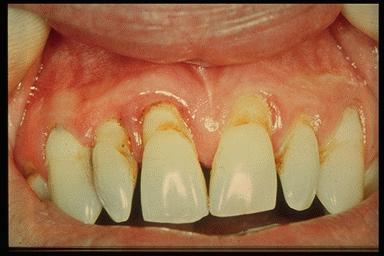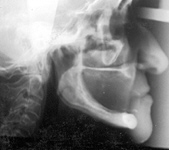Gingivitis
is the low-grade inflammation of the gums due to the presence of
plaque bacteria.
Chronic periodontitis is the main cause of tooth loss in late adulthood. The periodontal ligaments holding the tooth in its socket are destroyed and the alveolar crests are resorbed. The level of alveolar resorption can be measured to determine how long the individual has had the disease.
When there is poor oral hygiene, a person with cardiac trouble can develop infective endocarditis due to circulating bacteria in the bloodstream.
(Cawson, Odell 1991)
Chronic periodontitis is the main cause of tooth loss in late adulthood. The periodontal ligaments holding the tooth in its socket are destroyed and the alveolar crests are resorbed. The level of alveolar resorption can be measured to determine how long the individual has had the disease.
When there is poor oral hygiene, a person with cardiac trouble can develop infective endocarditis due to circulating bacteria in the bloodstream.
(Cawson, Odell 1991)

Advanced Periodontal Disease causes gums to recede
Courtesy:
http://webs.wichita.edu/mschneegurt/biol103/lecture22/periodontitis.jpg

An edentulous woman with resorption of the mandibular alveolar ridge
Courtesy:
www.globalmednet.com/do-cdrom/Clinical/Alveolar/andrade/an005.htm
After anti-mortem tooth loss, the
alveolar bone surrounding the lost tooth is resorbed. If a tooth is
lost after death, the tooth socket will still be present. This is
important to the anthropologist trying to put together a life history.
Extractions have likely been practiced for thousands of years. It was an important development in improving oral health. Records of this have been found in ancient Mesopotamia.
(Brothwell 1981)
Extractions have likely been practiced for thousands of years. It was an important development in improving oral health. Records of this have been found in ancient Mesopotamia.
(Brothwell 1981)